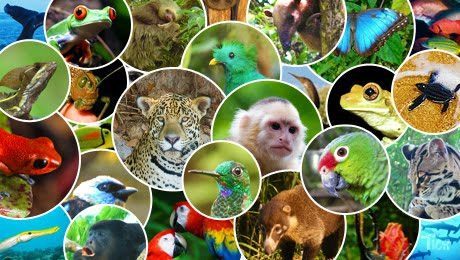Gabon’s Loango National Park recently provided the backdrop for researchers to observe a sight rarely seen in nature: chimpanzees applying insects to their wounds.
This behavior—a unique demonstration of potentially advanced cultural activity—suggests that the primate species may have developed health-related behaviors for a long time and are shared by members of tight-knit groups.
Loango, a large protected area on the west coast of Central Africa, is a natural paradise: the area, over 1,502 square kilometres, contains a mosaic of different habitats (such as rainforests, lagoons, wetlands, savannahs, coastal rainforests, floodplains and mangroves) that have created an explosion of biodiversity. The area is home to at least 80 species of mammals, including 11 species of primates, as well as leopards, forest elephants, hippos, swamp antelopes, and the shy giant pangolin. The park is also home to 272 species of birds.
Tobias Deschner, a researcher at the University of Osnabrück (Germany), and his wife, Simone Pika, head of the comparative cognitive biology research group at the Institute of Cognitive Sciences at the University of Osnabrück, lead the Ozouga Chimpanzee Project in cooperation with the Gabon National Park Authority (ANPN).
The research team has spent five years collecting data on the behavior of the Rekambo community, made up of about 40 primates (rekambo means “where English is spoken” in the local language). They have filmed incredible scenes, such as chimpanzees attacking lowland gorillas, even killing and eating the young. The team has also observed the chimpanzees working together, using branches to extract honey in underground hives.
In February 2022, scientists published their biggest discovery: chimpanzees deliberately treat their own wounds and those of their group using an unknown species of insect. This is the first time that this behavior has been scientifically observed in the great ape.
Self-warming in other animals
Michael Huffman, a primatologist and professor at Kyoto University (Japan), is one of the pioneers in the investigation of animal self-medication, a field known as zoopharmacognosy. Decades ago, he observed worm-infested wild chimpanzees swallowing the inner stem tissue of the African shrub Vernoniaamygdalina. The plant contains antiparasitic agents and is also used by the local population to treat intestinal pain.
When infested with roundworms, bonobos and gorillas swallow rough, hairy plant parts that can fight off the parasites. At the same time, the bristly hairs of the plants increase intestinal activity and drag the worms. Several years ago, scientists also discovered that Bornean orangutans treat their own with dragon tree extract.
Self-medication mechanisms are known even among non-primates. Some bird species “bath” in anthills to rid themselves of ectoparasites, such as feather mites, with the help of formic acid. In Kenya, at least one pregnant elephant has been observed eating certain plants that local naturopaths also use to induce labor in pregnant women.
Alessandra Mascaro, an evolutionary biologist from Ozouga and leader of the February study, first noticed in 2019 that the Rekambo chimpanzees seemed to treat their wounds. He watched a video of the female chimpanzee applying a freshly caught insect to an open wound on her son. Soon after, the mother carefully removed the remains of the insect. The behavior resembled wound care.
Back in Germany, Mascaro showed the recordings to Deschner and Pika, who were shocked by the scene. A later video showed that the behavior was not accidental or arbitrary, as other members of the Rekambo community seemed to also treat injuries in the same way. In Mascaro’s study, he recorded 19 animals self-medicating with insects.

Empathic monkeys
Deep in the Loango forest, Deschner watched as César, a chimpanzee carrying coconut plums, was visited by two males. From twenty feet away, he saw that one of the males had a large laceration on its left thigh and two open stitches on its back. The second of the two males was also injured, his wrist bleeding.
Apparently there had been a violent altercation the night before, probably caused by Pandi, the alpha male. After an absence of several days, Pandi rejoined the group, which may have increased tension between the males.
The next morning, I watched the chimpanzees groom each other. When the animals parted, I followed Thea, one of the apes who had visited Caesar the day before and who was still injured. From his facial expressions, it seemed that his injured leg bothered him: it inspected the wound with his fingers and his eyes searched the surrounding vegetation, as if searching for something.
Chimpanzees (a male named Caesar is pictured) eat a wide variety of foods, including fruits, nuts, seeds, and insects. The Rekambo chimpanzee’s territory, about 60 square kilometres, includes almost all the habitats of the national park, from the beach to the savannah and the tropical forest.
As if by instinct, I took my camera out of the backpack. Deschner also had his video camera ready. And then it happened.Like a flash, Thea’s right hand darts into the bushes. Catch an insect, perhaps a fly, perched on the underside of a leaf. It takes the animal to his mouth, crushing it slightly with his lips. Next, you carefully apply the resulting gruel to your flesh wound, stroking it from one side to the other with your fingertips. Repeat the procedure a few more times before finally cleaning the wound with their fingers.
This pattern of behavior corresponds exactly to Mascaro’s first observation. And it all happens so quickly that, if it hadn’t been observed beforehand, it would be almost impossible to discern what is happening.
Three days later, I observed another case of insect medication. This time it was another male that caught an insect and applied it to one of Thea’s wounds on her back. This behavior indicated to the scientists that, even beyond medicating each other, chimpanzees.They understand the welfare of others. It can be considered protosocial behavior, which scientists believe requires more complex cognitive abilities.
Once the two chimpanzees have left, Mascaro searches the forest floor where they were just now. She (and all scientists) would love to know what species of insect the chimpanzees were using in hopes of analyzing their chemistry. But the chimpanzees have not left any insects.
A lucky break
It is difficult to know to what extent some animals are aware of the links between certain behaviors and pharmacological effects.What’s more, scientists can never be sure that a behavior, even intended, has produced the desired effect hours or even days later. Furthermore, there are often alternative explanations, especially in nature, for why an animal is sick or recovers. To know for sure, it would be necessary to do tests before and after, which is usually impossible with wild animals.
The observations by Mascaro and his colleagues on the Ozouga research team are unique in that they documented the behavior firsthand, a fortunate observation, he says. Rekambo’s chimpanzees only seem to use the insect method when injured, limiting opportunities to see it in practice.
It remains to be seen whether these findings have deep scientific significance or are instead merely a behavioral coincidence. Humans, of course, are also known to do strange things (some proven, but many not) in pursuit of optimal health and well-being. For chimpanzees to behave in the same way would be another thing we have in common with our closest living relatives.

